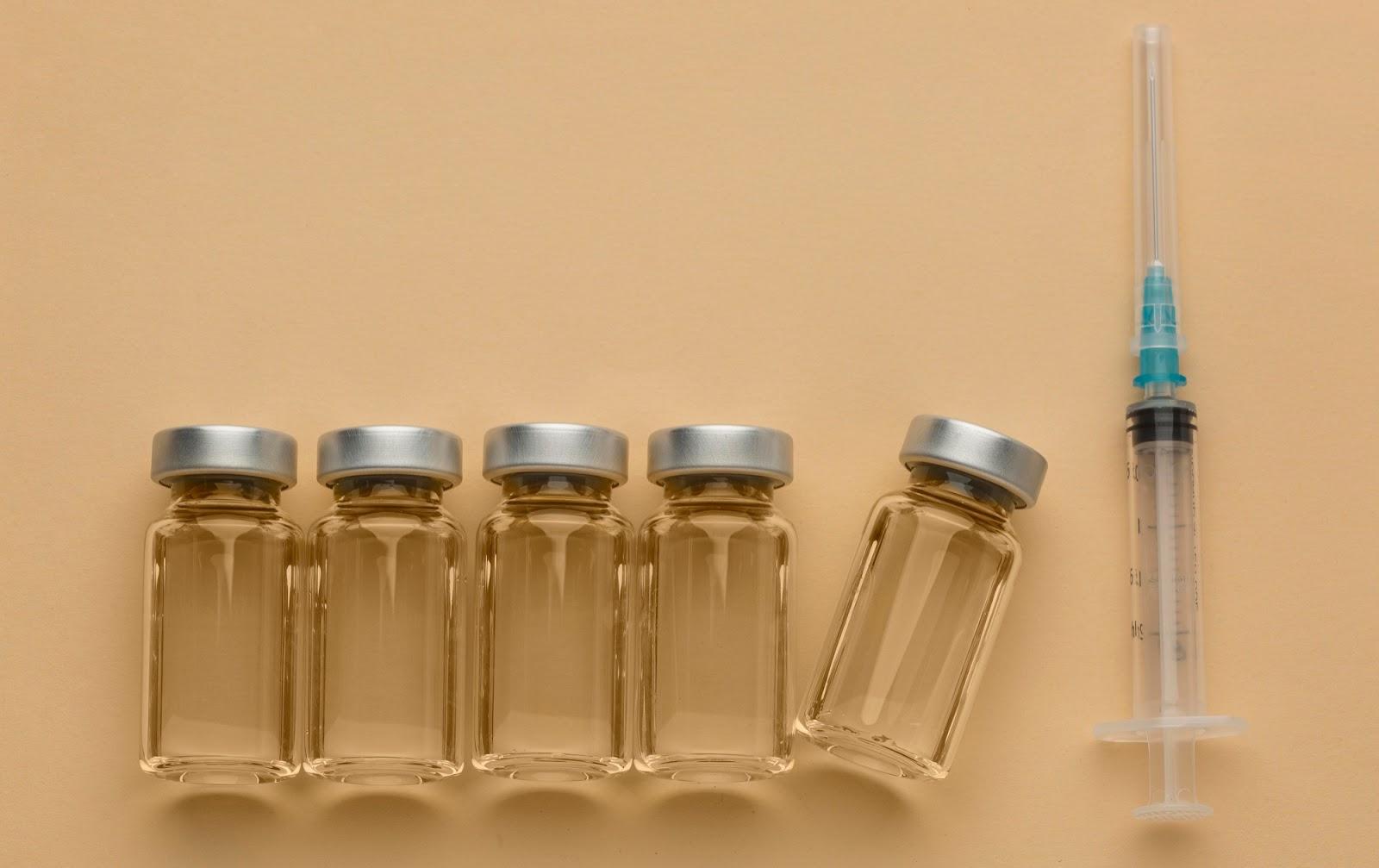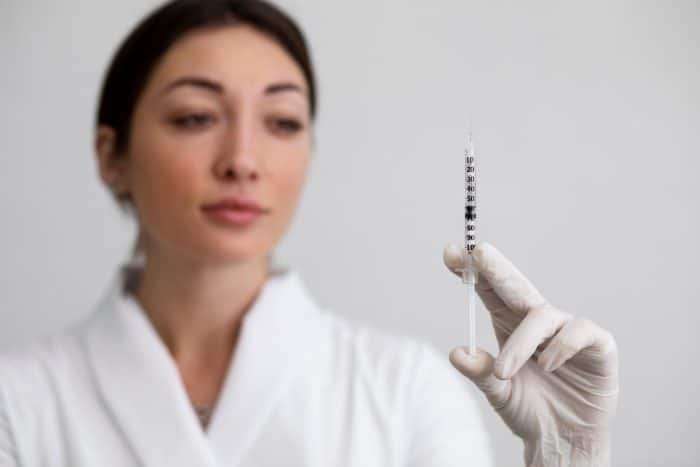
Though neurotoxin injections are renowned for making wrinkles disappear by smoothing the skin, countless studies have explored how these minimally invasive cosmetic procedures can address medical conditions such as muscle tightness and excessive sweating. This versatility showcases how neurotoxin injections are a multifaceted tool in aesthetic and therapeutic applications.
Dysport offers a unique option within this expanding field. Its formulation utilizes a specific type of botulinum toxin, emerging as a popular choice due to its quick onset and long-lasting results. Dysport stands out among other neurotoxin injections because of its unique protein structure.
This article will explore Dysport’s properties and discuss its diverse applications in cosmetic and therapeutic settings.
Key Takeaways
- Dysport is a botulinum toxin type A neurotoxin used for aesthetic and therapeutic purposes.
- It works by temporarily paralyzing targeted muscles, reducing the appearance of wrinkles and fine lines.
- Experts use Dysport for facial rejuvenation, muscle spasticity, and hyperhidrosis management.
- Understanding its mechanisms of action and clinical applications is crucial for informed decision-making in successful patient treatments.
What Is Dysport?
Dysport is a prescription injection containing abobotulinumtoxinA, a form of botulinum toxin type A derived from the bacteria that cause botulism. Dysport temporarily reduces muscle activity by blocking nerve activity in the muscles when injected. This targeted relaxation of muscles is what gives Dysport its therapeutic benefits. There are two main applications for Dysport:
- Cosmetic Treatment: Dysport is most commonly used to reduce the appearance of frown lines between the eyebrows (glabellar lines). These lines become more prominent with age and repeated facial expressions like frowning. By relaxing the muscles responsible for frowning, Dysport smoothens the skin and reduces the visibility of these lines.
- Medical Treatment: Dysport is also approved to treat cervical dystonia, a condition that causes involuntary muscle contractions in the neck, leading to pain and difficulty turning the head.
Comparison to Other Botulinum Toxin Type A Neurotoxins

Dysport is one of the botulinum toxin type A products available on the market. Many compare it to other neurotoxins like Botox and Xeomin. These products all work by blocking nerve signals to the muscles but differ in their formulation, protein content, and unit potency.
One key difference is the protein load; Dysport has a protein content different from Botox and Xeomin, which may affect its diffusion and potency. For instance, Dysport’s proteins have a lower molecular mass, which might result in a greater chance of diffusion, potentially making it suitable for treating larger areas with fewer injections.
The specific potency of each product, or the efficacy per unit of neurotoxin, also varies. Xeomin has the highest particular potency among the compared products. It has the lowest neurotoxin protein content per vial and requires fewer units to achieve the desired effect.
In clinical use, the duration of effect and the time to retreatment are comparable between Dysport and Botox, with some studies suggesting a slightly higher percentage of patients achieving treatment success with Dysport.
When choosing a neurotoxin for aesthetic or medical purposes, it’s essential to consider individual patient factors, desired outcomes, and the healthcare provider’s expertise. Each product has unique characteristics and may be more suitable for specific conditions or patient preferences.
Dysport’s Mechanism of Action
The neuromuscular junction (NMJ) is the microscopic connection point where a nerve cell transmits a signal to a muscle fiber. Usually, this signal involves the release of a neurotransmitter called acetylcholine (Ach) from the nerve terminal. Ach binds to receptors on the muscle fiber, triggering events that lead to muscle contraction.
Dysport disrupts this communication pathway. Once injected into targeted muscles, Dysport works in the following steps:
- Entry into Nerve Terminals: Dysport enters the nerve terminals of the injected muscles.
- Blocking Acetylcholine (Ach) Release: Dysport prevents the release of Ach from the nerve terminal into the neuromuscular junction.
- Muscle Relaxation: Without sufficient Ach binding to muscle fiber receptors, muscle contractions stop, leading to relaxation.
Temporary Paralysis of Targeted Muscles
Dysport induces a temporary paralysis of the targeted muscles by inhibiting acetylcholine release. This treatment is beneficial in areas where muscle contractions cause aesthetic concerns, such as frown lines or crow’s feet. The paralysis is localized and does not affect the entire muscle group, allowing for natural movement in untreated areas.
Reduction of Wrinkles and Fine Lines
Dysport’s cosmetic application is primarily for reducing wrinkles and fine lines. As the targeted muscles relax, the skin above them becomes smoother, reducing the appearance of wrinkles. This effect is especially noticeable in dynamic wrinkles formed by repetitive facial expressions.
Dysport’s time to work is usually immediate, with patients observing the onset of the treatment within 2 to 3 days post-treatment. The peak visibility of Dysport’s effects shows up after about two weeks. As for its longevity, it varies from patient to patient. However, many report that it can last between three to four months.
Clinical Applications of Dysport

Dysport’s ability to temporarily relax muscles has a range of clinical applications. It’s used in aesthetic and therapeutic settings, offering solutions for appearance and muscle function concerns. Below is a detailed exploration of its various applications.
Aesthetic Treatments to Rejuvenate Your Look
Dysport is a popular choice for aesthetic treatments aimed at facial rejuvenation. Here’s a closer look:
- Facial Rejuvenation: Healthcare professionals administer Dysport to target areas prone to dynamic wrinkles, such as the forehead, around the eyes, and between the eyebrows (glabellar lines). The treatment results in a younger and more revitalized appearance.
- Targeted Areas for Injections: Dysport injections are typically administered in specific areas around the eyebrows, including the corrugator muscles (frowning muscles) and procerus muscles (between the eyebrows). In some cases, Dysport can treat crow’s feet (around the eyes), forehead lines, and other areas like the masseter and chin muscles.
- Expected Outcomes and Duration of Effects: Following Dysport injection for wrinkles, results can often appear within 2-3 days, with the full effect achieved in a week or two. Patients can expect a smoother appearance with reduced visibility of targeted wrinkles for 3-4 months. Individual results may vary based on muscle strength, injection technique, and metabolism.
Therapeutic Uses to Manage Medical Conditions
Dysport is approved to treat cervical dystonia, a condition characterized by involuntary muscle contractions in the neck that cause pain and difficulty turning the head. Professionals can also use this injection to manage spasticity (muscle stiffness and tightness) in other muscle groups, including the arms, hands, legs, and feet, in adults and children over two years old.
Dysport relaxes the overactive muscles, helping improve mobility and reduce pain associated with spasticity. Dysport injections can alleviate severe sweating for individuals with hyperhidrosis by blocking the nerves that supply the sweat glands, effectively stopping the glands from producing excess sweat.
Dosage and Administration Guidelines for Therapeutic Applications
The recommended dosing for upper limb spasticity ranges from 8 Units/kg to 16 Units/kg per limb, with a maximum total dose per treatment session not exceeding 16 Units/kg or 640 Units, whichever is lower. For lower limb spasticity, the dosage ranges from 10 Units/kg to 15 Units/kg per limb.
Dysport is a prescription medication; a qualified healthcare professional should administer the injection. The specific dosage and injection sites may vary based on the individual’s condition and response to the treatment. Patients should consult their healthcare provider to determine the appropriate treatment plan.
Safety and Considerations

As with any medical procedure, Dysport injections carry the possibility of side effects. These are usually mild and temporary, but patients must discuss them with their healthcare provider first. Some common side effects may include:
- Injection site pain, redness, swelling, or bruising
- Headache
- Temporary eyelid drooping (ptosis)
- Muscle weakness or temporary paralysis (usually minor and resolves within weeks)
- Flu-like symptoms
In rare cases, the effects of Dysport may spread from the area of injection to other parts of the body, leading to symptoms like muscle weakness, vision changes, and breathing difficulties. These symptoms can be life-threatening and require immediate medical attention.
Patient Selection and Contraindications
Dysport cannot be administered in patients with known hypersensitivity to botulinum toxin products, cow’s milk protein, or any of the formulation’s components. It is also not recommended for use in areas with infection. Patients with pre-existing swallowing or breathing difficulties may be more susceptible to severe side effects, and professionals should closely monitor those with neuromuscular disorders.
Pretreatment Assessment and Counseling
Before undergoing Dysport treatment, a thorough consultation with a qualified healthcare professional is essential. This consultation typically involves:
- Medical History Review: The specialist will review the patient’s medical history, including any pre-existing conditions and medications they are taking.
- Physical Examination: A physical examination may assess the area targeted for injection and ensure Dysport suits the patient’s desired outcome.
- Discussion of Risks and Benefits: A healthcare professional will discuss the potential benefits and risks of Dysport treatment and alternative options.
- Realistic Expectations: Patients must have realistic expectations about Dysport’s results. Their doctor can explain what to expect regarding improvement and duration of effects.
Conclusion
Dysport is a valuable tool in the collection of medical professionals, offering both aesthetic and therapeutic benefits. Understanding its mechanisms of action, clinical applications, and safety considerations is essential for healthcare providers to make informed decisions and provide optimal patient care.
By staying informed about Dysport and its uses, medical experts can effectively incorporate this treatment option into their practice, contributing to their patients’ overall well-being and satisfaction.
About: DoctorMedica is your trusted supplier of top-quality dermal fillers, viscosupplements, and more for your medical practice. If you’re looking to buy Dysport online for your practice, the sales representatives at Doctor Medica can give you guidance.
FAQs
1. What is Dysport?
Dysport is an injectable neuromodulator that can smooth fine lines and wrinkles by temporarily blocking nerve signals to the muscles. Doctors can also use it to address medical conditions like excessive sweating.
2. How long does it take for Dysport to work?
Dysport typically begins to show results within 2 to 3 days after injection, with full effects visible after about two weeks.
3. Can I use Dysport for an eyebrow lift?
Healthcare professionals can strategically inject Dysport for an eyebrow lift by targeting the muscles that pull the eyebrows downward. Doing so allows the muscles to lift the eyebrows.
References
Nigam P, Nigam A. Botulinum toxin. Indian Journal of Dermatology. 2010;55(1):8. doi:10.4103/0019-5154.60343
Ravenni R, De Grandis D, Mazza A. Conversion ratio between Dysport and Botox in clinical practice: an overview of available evidence. Neurological Sciences. 2013;34(7):1043-1048. doi:10.1007/s10072-013-1357-1
Related Articles
Joanna Carr
Xeomin and Dysport: A Comparative Analysis
Xeomin and Dysport are botulinum toxin type A treatments for various medical and aesthetic indications. Read a thorough comparison here.
Joanna Carr
4 Best Brands Of Injections Similar To Botox You Should Consider In 2025
A list of the best botulinum toxin (botox) brands in 2025 by Doctor Medica. Buy Botox at Wholesale prices at Doctor Medica.
Joanna Carr
HYAcorp vs Sculptra: Comparing Non-Surgical Body Contouring Options
Compare HYAcorp and Sculptra, two leading non-surgical body contouring options. Discover their unique benefits, mechanisms, and effectiveness in enhan...


